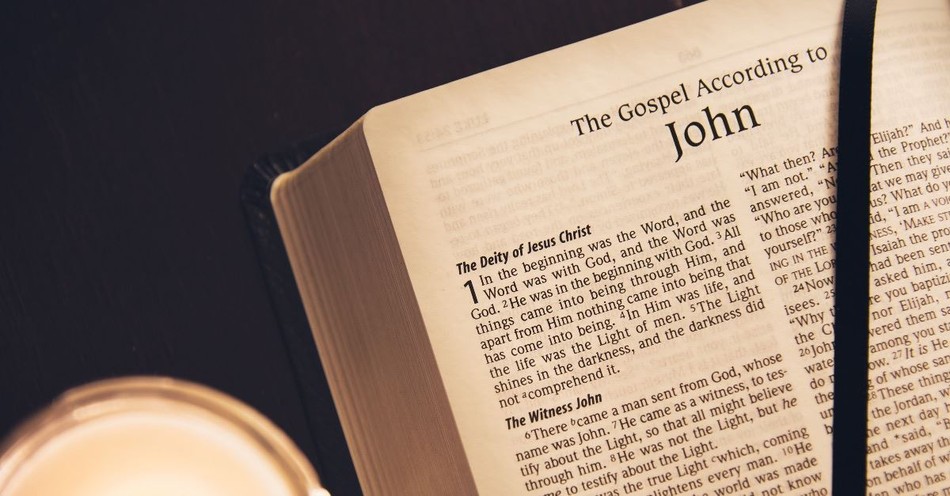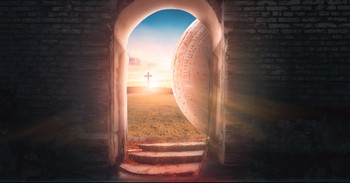At some point in your faith journey, somebody probably handed you a copy of the Gospel of John. Turns out Christians have been doing this for a long time.
In 2015, the website Bible Gateway conducted a survey asking participants to choose their favorite book of the Bible. Guess which one came out on top: the Gospel of John.
All Scripture is God-breathed, of course, but John has long been a favorite. It was, after all, written by “the disciple whom Jesus loved,” one of the Lord’s inner circle within the Twelve, and the only male disciple to have stayed by Christ’s side all the way to the cross.
John’s Gospel is unique. It’s structured differently than the other three Gospels: half the book describes three years of Jesus’ life and the other half describes the last week of Jesus life. John interspersed carefully selected miracles—seven of them—with seven “discourses” or sermons. It’s flow finally culminates in the resurrection, the greatest miracle, which is followed by a final discourse of sorts to Peter, on the beach, after making them breakfast.
The Gospel of John has been aptly described by biblical scholar Leon Morris and others “as a pool in which a child can wade and an elephant can swim.”
It is also the New Testament book for which we have the earliest manuscript evidence, a papyrus fragment the size of a business card, possibly dating back to the early second century, within a few years of its author’s death.
In a month or so, a much later manuscript of this gospel will be on display. Its story reveals that this beloved gospel has offered comfort to Christians through the ages.
St. Cuthbert’s Gospel, a leather-bound, Latin copy of John acquired by the British Library in 2012, is believed to be Europe’s oldest surviving book. Written sometime in the late seventh century, this beautifully-preserved segment of God’s word was slipped into the coffin of a man regarded as a saint, perhaps by a friend thinking of Jesus’ words recorded in John 11:25: “I am the resurrection and the life. Whoever believes in me, though he die, yet shall he live.”
The book lay with St. Cuthbert for over 400 years. It was removed when his remains were relocated to Durham Cathedral.
The book, with its red cover, elegant, double vine scroll and pristine condition, will go on display later this month at the British Library as part of an exhibit called “Anglo-Saxon Kingdoms: Art, Word, War.” The library has published scanned images of every page of the gospel. If you come to BreakPoint.org, we’ll link you to it.
But as beautiful as the book is, it’s the “word” inside that has captured the church’s attention for centuries.
The “Word,” or the “Logos,” is central to John’s theology. “In the beginning was the Word, and the Word was with God, and the Word was God.”
With this opening line, John immediately connects Jesus with the Genesis account of creation. When God spoke the cosmos into existence, His speech was a Person—a Person who took on flesh and came to dwell among us.
John’s Gospel, treasured today as it was in St. Cuthbert’s time, reveals Jesus in ways the other gospels do not. He is “light” and “life,” something not only clearly said in John’s prologue, but revealed by the miracles and sermons John chose to include.
He is our Good Shepherd. He prays for our unity. He uses His last breaths to ensure the care of his mother. From John we know of Jesus’ post-resurrection appearances to Mary Magdalene and Thomas, and of His glorified breakfast of fish with His disciples.
Because John portrays the Jesus who knew and loved him, his gospel has kindled faith and comforted many throughout the centuries. John’s Gospel is still handed out in booklet form by evangelists to this day, and its summary of the good news in chapter three, verse 16 is perhaps the most quoted Bible verse in history.
That this 1,300-year-old saint and those who laid him to rest cherished the Gospel of John should inspire in us a profound gratitude, not only for the printed word and how common and even commonplace it’s become, but for the way John’s word allowed believers across the ages to see, and believe, the glory of the Word made flesh.
BreakPoint is a Christian worldview ministry that seeks to build and resource a movement of Christians committed to living and defending Christian worldview in all areas of life. Begun by Chuck Colson in 1991 as a daily radio broadcast, BreakPoint provides a Christian perspective on today’s news and trends via radio, interactive media, and print. Today BreakPoint commentaries, co-hosted by Eric Metaxas and John Stonestreet, air daily on more than 1,200 outlets with an estimated weekly listening audience of eight million people. Feel free to contact us at BreakPoint.org where you can read and search answers to common questions.
John Stonestreet, the host of The Point, a daily national radio program, provides thought-provoking commentaries on current events and life issues from a biblical worldview. John holds degrees from Trinity Evangelical Divinity School (IL) and Bryan College (TN), and is the co-author of Making Sense of Your World: A Biblical Worldview.
Publication date: October 18, 2018
Photo courtesy: Anthony Garand/Unsplash




